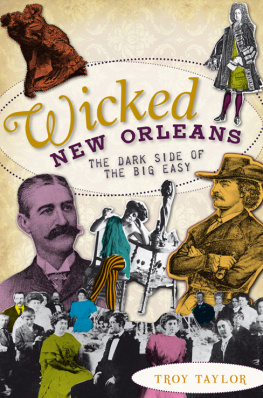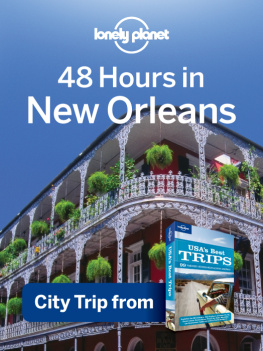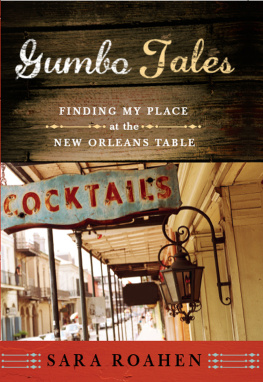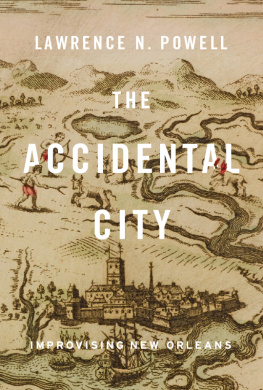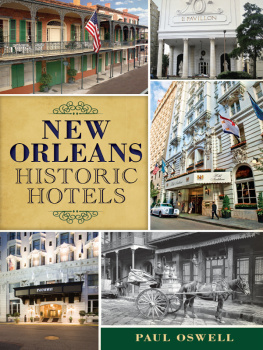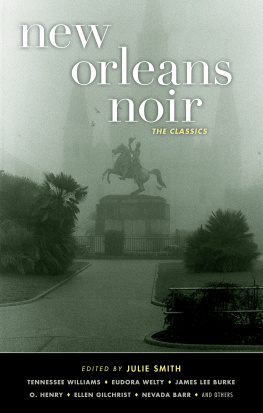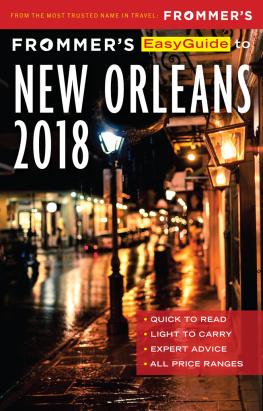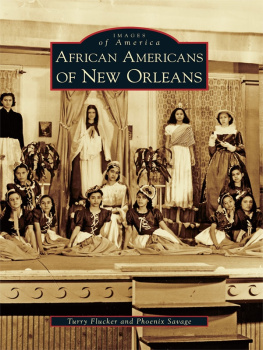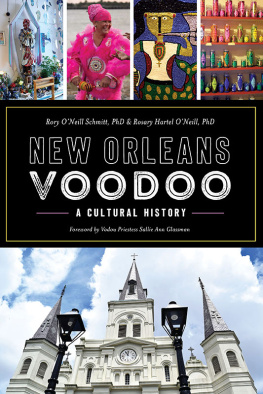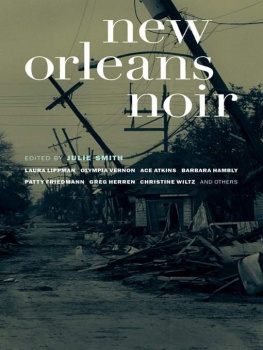THE WORLD THAT MADE NEW ORLEANS
FROM SPANISH SILVER TO CONGO SQUARE
Ned Sublette

Library of Congress Cataloging-in-Publication Data
Sublette, Ned, 1951.
The world that made New Orleans : from Spanish silver to Congo Square / Ned Sublette.
p. cm.
Includes bibliographical references and index.
ISBN-13: 978-1-55652-730-2
ISBN-10: 1-55652-730-6
1. New Orleans (La.) Civilization. 2. New Orleans (La.) History. 3. New Orleans (La.) Description and travel. 4. Louisiana History To 1803. I. Title.
F379.N55S83 2008
Jacket design: Monica Baziuk
Cover photo of woman: Ned Sublette
Author photo: Alden Ford
Interior design: Pamela Jurez
pp. 47, 49, 70, 83, 84, 101, 108, 129, 159, 205, 256: New York Public Library
pp. 15, 51, 99: Department of Special Collections, University of Notre Dame Libraries
pp. 73, 249: Historic New Orleans Collection
pp. 277: Maryland Historical Society
pp. vivii, 278, 289, 300, 305, 307, 308, 309, 313: Ned Sublette
2008 by Ned Sublette
All rights reserved
Published by Lawrence Hill Books
An Imprint of Chicago Review Press, Incorporated
814 North Franklin Street
Chicago, Illinois 60610
ISBN-13: 978-1-55652-730-2
ISBN-10: 1-55652-730-6
Printed in the United States of America
5 4 3 2 1
There is more gold to be gotten from men than from rivers.
Bertolt Brecht, Rise and Fall of the City of Mahagonny
CONTENTS

St. Charles and Cadiz Streets,
New Orleans, February 2005.
THE SWAMP
1
ROCK THE CITY
On sabbath evening, wrote a visitor to New Orleans in 1819, the African slaves meet on the green, by the swamp, and rock the city with their Congo dances.
Most of the United States was quiet on Sunday. In many parts of the rural, mostly Protestant nation, dancing was frowned on. But the mostly French-speaking, mostly Catholic, black-majority port city of New Orleans, proudly unassimilated into the English-speaking country that had annexed it, was rocking.
Jump forward 128 years, to Roy Browns Good Rockin Tonight. If I had to name the first rock n roll record, I would first say that there is no such thing, then I would pick Good Rockin Tonight. It was recorded at Cosimo Matassas rudimentary studio on the edge of New Orleanss French Quarter: a microphone and a disc cutter, in the back room of a record store at Rampart and Dumaine.
Cosimos place was catty-cornered from the legendary green by the swamp, known in the old days as Place Congo, or Congo Square.
The distance between rocking the city in 1819 and Good Rockin Tonight in 1947 was about a block.

This book is about how New Orleans got to 1819. Its not about music per se, but music will be a constant presence in it, the way it is in New Orleans.
When the United States took possession of the Louisiana Purchase in 1803, the city was an urban crossroads of languages, both spoken and musical, with a complex Afro-Louisianan culture already in existence. By the time Louisiana became the eighteenth state in 1812, most of the elements that make New Orleans so visibly, and audibly, different from the rest of the country were already in place.
New Orleans was the product of complex struggles among competing international forces. Its easy to perceive New Orleanss apartness from the rest of the United States, and much writing about the city understandably treats it as an eccentric, peculiar place. But I prefer to see it in its wider context. A writer in 1812 called it the great mart of all the wealth of the Western world. By that time, New Orleans was a hub of commerce and communication that connected the Mississippi watershed, the Gulf Rim, the Atlantic seaboard, the Caribbean Rim, Western Europe (especially France and Spain), and various areas of West and central Africa.
New Orleans is an alternative American history all in itself. Different in everything, Louisiana had what amounted to three colonial eras in rapid succession: French, Spanish, Anglo-American. Moreover, each colonial power that ruled Louisiana was associated not only with a different European language, but with a different slave regime. Each change of flag brought new laws and customs, causing black New Orleans to develop differently according to the possibilities afforded it during each of the colonial periods, and each flag brought with it distinct black populations. The Bambara, the Bakongo, the Baptiststhey came in different demographic waves, at different moments in history. Each new wave had to fit into, and became another layer in, the increasingly cosmopolitan African culture of New Orleans, which from the earliest days of slavery in Louisiana had its own personality.
Louisiana was founded as a French project, but the French colonization effort was halfhearted and brief, and the French king gave Louisiana away to Spain. A little more than forty years later, the still mostly French-speaking territory returned to French controlbut only for twenty days, until Napoleon Bonapartes governor could hand Louisiana over to the United States.
Spain held Louisiana for only about two generationsin theory, from 1762 to 1800; in practice, from 1769 to 1803. But this last third of the eighteenth century was a time of great change, encompassing the American, French, and Haitian revolutions. During this time, New Orleans began to be a port of importance, entering into its substantial ongoing relationship with Havanaa relationship that lasted more than 190 years. From the earliest days of New Orleanss commercialization as a port until the imposition of the U.S. embargo of Cuba by President Kennedy, New Orleanss constant trading partner was Havana, right across the Gulf of Mexico. The 1962 U.S. embargo of Cuba was also in effect an embargo of New Orleans, taking away a chunk of what had long been the citys core business and damaging the economy of New Orleans and the rest of the Gulf Coast. But not only that: with the embargo still in effect as of this writing, the more than forty years of communications blackout between New Orleans and Havana has clouded our memory of how important that link was, from Spanish colonial times though the 1950s.
Brief though it was, the Spanish period in New Orleans was crucial to the creation of Afro-Louisianan culture, and constitutes a singular moment in African American history. During the years when the Spanish governor of Louisiana reported to the Spanish captain general of Cuba, the rules in New Orleans regarding slaves were much like those in Havana. There was a large population of free people of color. Slaves were treated badly, but enslaved people had some libertiesmost important, they had the right to purchase their freedom. That was more than black New Orleanians had before, and more than enslaved people in the United States would have.
In Cuba, where such a regime lasted through the entire experience of slavery, there is every indication that this greater degree of freedom within slavery was good for music. The big city of Havana, central to maritime commerce, took music in from all over, including from Louisiana, but radiated it out even more powerfully. As New Orleans grew, it would do the same, inhaling and exhaling music, up through the days of jazz, rhythm and blues, rock and roll, and the towns latter-day musical lingua franca, funk. Cities drive innovation, and New Orleans was



